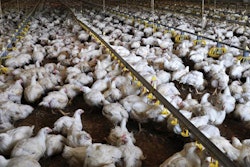
I was recently invited to participate in the second Fiber Board trade conference hosted by Agromed (Austria) in cooperation with the University of Natural Resources and Life Sciences, Vienna. I rarely accept such invitations anymore, but this time, it was about a theme close to my interests: fiber nutrition, of which I have devoted a good number of my writings in the last couple of years. My participation on this board of worldwide experts was nothing short of an enlightenment because it allowed me to clarify some issues and come back with even more questions.
Part of my participation agreement was permission to share with our readers an outline of this private event, as I strongly believe we can all benefit by a deeper understanding of fiber as a nutrient, antinutrient and of its functional components. Below are the six major points, which, I am afraid, can only provide but a brief glimpse of the event.
1. Microflora changes in times of stress
It is now well-established by numerous studies in humans and animals that during times of stress, such as weaning in piglets or gut infections in broilers, there is a tremendous upheaval on the makeup of gut microflora. As such, during times of stress, it is to the benefit of the animal’s health to support the “good” bacteria. We can do this by the use of certain external strains (probiotics) or by providing functional fibers to enhance the innate beneficial bacteria. Ideally, a combination of both methods should lead to the best possible result.
2. Crude fiber is an antiquated form
The well-known crude fiber term describes only a relatively small function of the whole dietary fiber spectrum. For example, it does not include all hemi-celluloses and pectins, both of which play a very significant role in modulating gut microflora. Although its use remains relevant in establishing equations that predict net energy concentration based on chemical composition, its value is nil in terms of describing the effect of fibers on gut bacteria. Similar forms, such as acid detergent fiber and neutral detergent fiber, offer a more inclusive methodology in terms of fiber quantity in any specific ingredient, but they still fail to provide any qualitative trait.
3. Fiber is not just an anti-nutrient
There is no doubt that excess fiber will reduce overall nutrient digestibility, as it has been demonstrated by many older studies. But not all fibers act in this way. For example, pectins form a gel that is expected to reduce iron absorption, but studies have shown it actually enhances it. This is because water-soluble fibers reduce transit time, enabling better digestibility. This is, of course, true up to a certain concentration, as we know very well that excess soluble fibers, such as those from wheat and barley, might actually reduce digestible enzyme access to nutrients.
4. There is a need to qualify fiber in biological terms
In practical terms, gut microflora respond to two types/functions of fiber: solubility and fermentability. As it happens, some fibers can be partially soluble (such as hemicelluloses) or partially fermentable (such as cellulose). As such, we cannot provide an easy method of characterizing each fiber based on its chemical nature alone. Thus, each ingredient, with a very complex fiber profile, must be assayed and characterized individually — a very laborious and expensive proposition, but one without a more practical alternative.
5. Animal requirements in terms of fiber functionality differ
We can only start to understand the complexity of this problem by bringing up some examples. In older animals, (insoluble) fiber is beneficial only in terms of gut motility, whereas its contribution to overall energy supply is but limited (fermentable fiber). In young animals, however, things become quite complicated. Soluble fiber is required to slow down digesta passage rate in the small intestine, under certain conditions, whereas a healthy fermentation pattern in the large intestine is required to ensure overall gut health. As such, the right mix of soluble versus insoluble fiber requires quantification for each species and age, something extremely difficult, especially considering that such ratio is bound to be different in relatively healthy versus unhealthy animals.
6. Human nutrition is more advanced in terms of fiber
There is a considerable body of literature in the realm of human nutrition pertaining to the issue of fiber that remains unknown to animal nutritionists. Given the close proximity of the human digestive system, similar problems of gut health and not so disparate ingredients, or at least types of fibers we consume, it is logical to assume that research from human nutrition science could be used at least as the springboard to enhance our understanding in fiber and health interactions. After all, Hippocrates of Kos, the father of modern Western medicine, used to say let food be your medicine and medicine your food.
Removing emphasis from fiber concentration
We must move away from crude fiber and focus on fiber solubility and fermentability. Considerable research is required to qualify the effects of each type of fiber, and their correct ratio under each stress condition for each animal species. Ingredients must also be characterized according to their functional fiber concentrations. In general, we must remove emphasis from fiber concentration towards fiber physiological functions. Fiber is neither “good” nor “bad” as there are numerous types of fibers, each with a specific role to play — something that changes according to animal age and condition.
Learn more: The role of fiber in monogastric animal nutrition
















